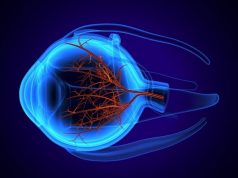The most significant metabolites identified are part of the lipid pathways
TUESDAY, Sept. 19, 2017 (HealthDay News) — Patients with age-related macular degeneration (AMD) have altered plasma metabolomic profiles compared with those without the condition, according to a study published online Sept. 12 in Ophthalmology.
Inês Laíns, M.D., from Harvard University in Boston, and colleagues used color fundus photography and collected fasting blood samples (analyzed by Metabolon Inc. using ultrahigh-performance liquid chromatography and high-resolution mass spectrometry) from 90 patients with a diagnosis of AMD (30 each with early, intermediate, and late AMD) and 30 controls (>50 years of age) without any vitreoretinal disease.
The researchers identified 878 biochemicals, although only 87 had levels that differed significantly between AMD patients and controls in multivariate logistic regression. The majority of these metabolites (82.8 percent), including the most significant metabolites, belonged to the lipid pathways. Of the 87 metabolites, analysis of variance showed that 55.2 percent were significantly different across the different stages of AMD. Among these metabolites, a significant enrichment of the glycerophospholipids pathway was seen.
“These findings have the potential to improve our understanding of AMD pathogenesis, to support the development of plasma-based metabolomics biomarkers of AMD, and to identify novel targets for treatment of this blinding disease,” conclude the authors.
Several authors report financial ties to the pharmaceutical industry and Metabolon, and some are listed on a patent for AMD biomarkers.
Abstract/Full Text (subscription or payment may be required)
Copyright © 2017 HealthDay. All rights reserved.








